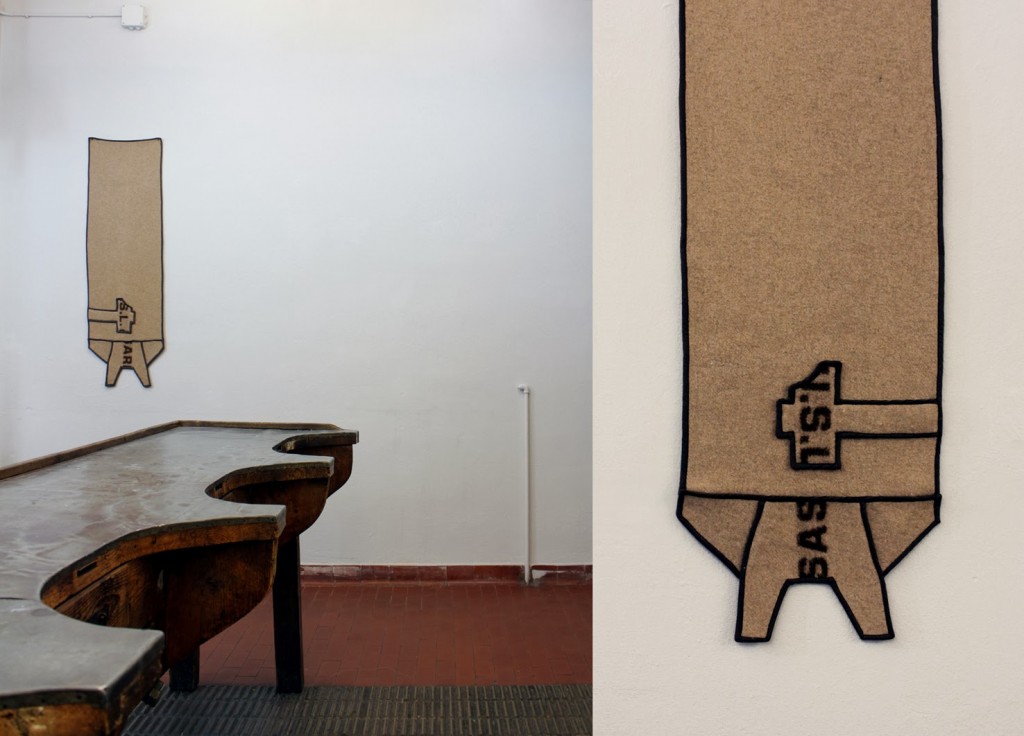The analysis of places is a fundamental part of my work, in particular in regards of their ability of producing, in those who transit through them, a particular mood and, subsequently, when the drawing of the places itself is generated with a certain awareness, of inspiring a better lifestyle. The reproduction of this idea, typically modernistic, often appears in my expositive projects, in which the path among the artworks itself is essential for their reading and for an ideal functionalization of them. In the images of Borca I see a time not interrupted, but suspended, an intact mechanism that maintains the memory of its function, which an external intervention has abruptly snatched away. What I’d like to do is to temporarily reactivate some of these functions (the meals, the studying, the whispering in the darkened dormitories, the praying, etc.) involving several people in this operation, so that they may become witnesses of the lost communion between the parts.
Reflection and generel idea for Borca
action group (artists): Mirko Canesi, Fiorella Fontana, Stefano Serusi and Marcello Tedesco.
How can a place re-live?
To be a museum of itself would imply a total, almost photographic, in a sense, reorganisation of the conditions of a particular moment of its history, the un-derailed gathering of images and objects that pertain to it, reaching an unnatural and steady freeze in which time wouldn’t be permitted to create new stories. Instead, one can think of it as a material and immaterial archive to be interpreted, and that needs to gain substance once again, with new acts and new narrations. Thinking of it as an ideal theatre of presented gestures and artworks, that cannot be but for that location, both because they are produced in that specific context, and because they are shown in a unique harmony with the existing architecture and nature.
Visiting the Eni Village, one obtains a direct contact with the paternalistic idea that has animated, in the past, people like Enrico Mattei, that is to say to unite will to a kind of ethics that we sum up today as socialist and christian at the same time. Beside a State that wants to one up itself through technological progress, the necessity to conceive an ample humanistic project in which the well-being of the worker and the education of their children – future Italians- is the main concern and symbol, isn’t secondary.
In the Eni Village, even from its architectural design, the idea of giving children a Summer Camp both close to nature and protected from its perils, in which to combine, through regular daily practise, study and religious reflection, is clear.
During our survery, the typically modernistic will to match to the development process brilliance and architectural quality, both in the spaces and the furnishing which have immediately earned our interest, was still clear for all to see.
Among these elements are the four confessionals, found without a function in the main hall, for which an immediate and strong empathy was born.
In them we have wanted to find that projectual approach that wants to return to the individual seen in communion; individual not as much subjugated to the fear of sin, but rather accepted in its individuality, and whom approaches not confession, per se, but confidence, which can become, also and most of all, the confidence towards this place of those who came in contact with it.
Mattei’s State – defined the most powerful Italian state after Augustus by foreigners – is a State where the individual, their thoughts, their necessities don’t fall on deaf ears, and where ideas find a space to express themselves.
Spending a few days in informal residence at the Eni Village will be for us an ocasion to link ourselves with the place, and to somehow follow the trail of those who have wanted it in the first place, and those who have inhabited it, seeking out stories and traces in the surroundings themselves, which will have to be given back with minimal interventions on the location, and studying ways to re-use it in a temporary way, or in a more extensive and utopic projectual plan that springs from its very legend.

Stefano Serusi. Ritmo, 2013.




